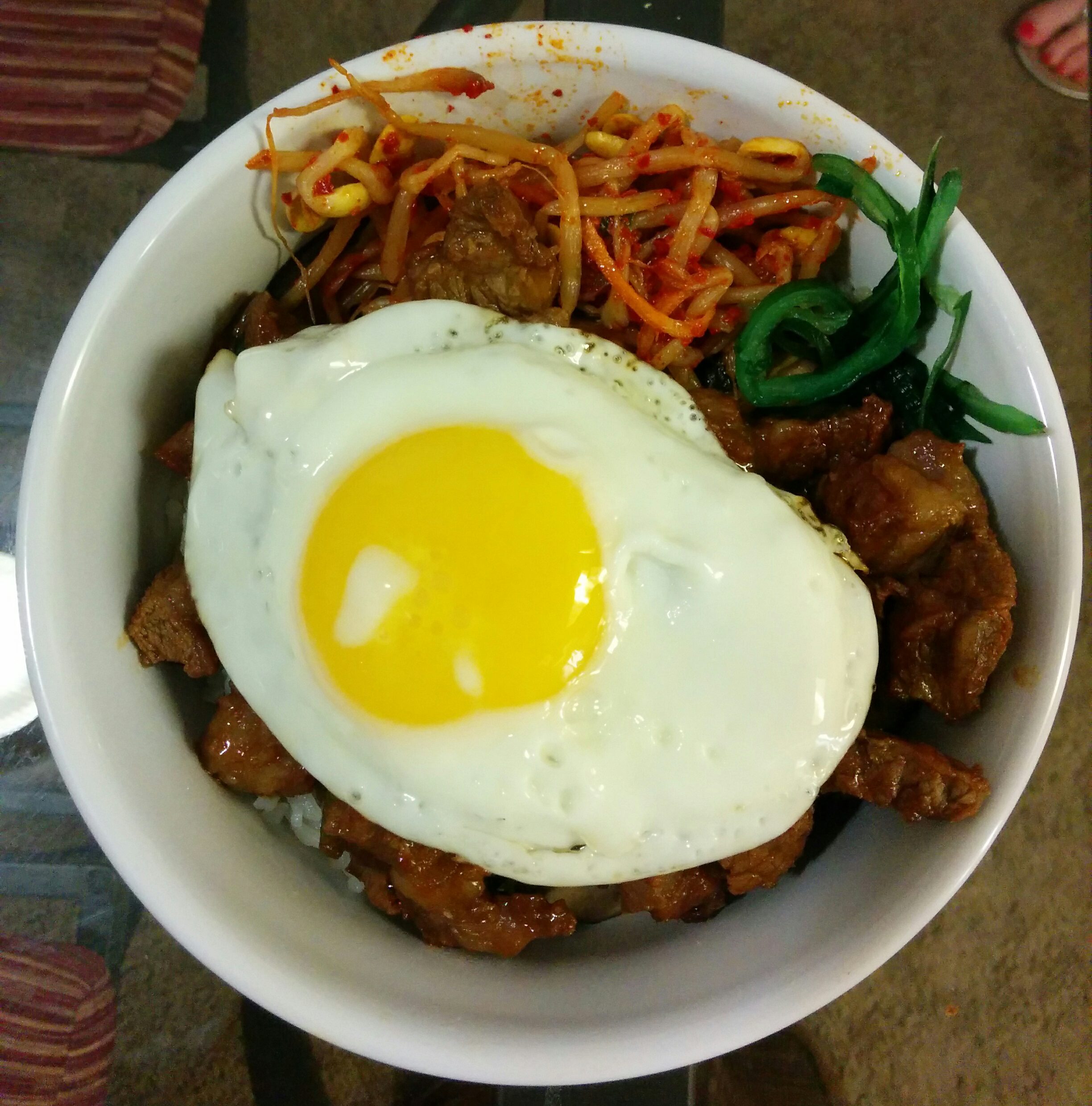While working on the new map page(The Dishes So Far) I noticed a distinct lack of Asian national dishes. This is bizarre as some of my favorite foods are Asian/Asian inspired. South Korea was a no-brainer as there is a great Korean grocery store nearby so getting authentic ingredients was easy.
While researching Bibimbap and trying to find an authentic recipe to use it reminded me of how pizza is in the United States. There is NY Style pizza much like there is Jeonju style Bibimbap. Also like pizza there are commonalities, where pizza has to have dough, Bibimbap has to have rice as the name Bibimbap translates to “mixed rice”.
Something I found interesting was that there is symbolism regarding the color of different ingredients and what they represent
- Black/dark colors represent North and the kidneys(shiitake mushrooms/bracken ferns/nori seaweed)
- Red or orange represents South and the heart(chilli/carrots/jujube dates)
- Green represents East and the liver(cucumber/spinach)
- White is West and the lungs(beansprouts/radish/rice)
- Yellow represents the center and stomach(pumpkin/potato/egg)
This is a short summary but you can read more about this if you are interested here and here.
Thankfully with the Korean grocery store, I was able to gather up all the ingredients easily. There are three main stages of making Bibimbap, The first stage is to prepare the marinade for the short ribs.
The Gochujan hot pepper paste has a really nice dark color and is very spicy. I have learned from random Korean noodles/Ramyeon that Koreans like their spicy food.
The marinade was quick to make and smelled so good. The asian pear added a wonderful flavor and I always love green onion.
The short ribs were already cut so it was as easy as tossing them in the marinade. After that they went into the fridge to chill and absorb the flavor for a bit.
With rice being such an important component of the dish, it was important to get some high quality rice. This rice was awesome. You could use a brown rice if you want but if you want to be authentic, you have to use high grade white rice.
Once the rice was made, it went into a pan with a little sesame oil to crisp it up. The sesame oil provides a nutty flavor that adds another dimension to the rice.
We are near the end. Finally we have to cook the shiitake mushrooms and the meat. The shitake mushrooms were cooked in a wok which was my first time using one. It was awesome to be able to move the mushrooms up and out of the way and they cooked quickly.
The short ribs cooking smelled amazing!
I also added seasoned seaweed and soy bean sprouts to the bibimbap.
Finally plate everything together and enjoy. I love Bibimbap, its just a simple fulfilling dish and I love how all the flavors are distinct but also blend together well.
The main recipe I used is here but I also consulted this link here (which has much better pictures than I do!)









